Building an Adaptive AI-Powered Higher Education Class for the Future of Engineering: A Case Study from NTUA
Abstract
Featured Application
Abstract
1. Introduction
- -1st Stage: Expert Systems (early 1980s to mid-1990s)
- This phase marked the first widespread effort to apply AI in chemical engineering. Research focused primarily on rule-based expert systems, aiming to encode human expertise into decision-making tools. For education purposes, programs like CHEMEX were used, which was an expert system developed to assist students in understanding chemical process synthesis and design [9]. Also, several flowsheet simulators were being developed, including PACER, CHES, and FLOWTRAN [10].
- -2nd Stage II: Neural Networks (~1990 to ~2008)
- During this period, interest shifted toward data-driven approaches, particularly artificial neural networks. These models were applied to tasks such as process modeling, control, and fault detection, benefiting from their ability to learn complex nonlinear relationships from data [11]. One example involves combining expert systems and neural networks in a process called hybridization, used both in practice and to teach students about the complexities of process fault detection and the advantages of combining different AI approaches [12]. Another example is a feed-forward neural network for knowledge acquisition and storage, and subsequent use was developed for a chemical reactor selection expert system [13].
- -
- Insufficient data availability, restricted data access, limited computational resources, and underdeveloped programming environments and paradigms.
- -
- The presence of competing, successful, emerging technologies in chemical engineering, especially mechanistic modeling, optimization, and model predictive control.
- -3rd Stage: Deep Learning Data Science (~2005 to present)
- This phase is defined by the rise of deep learning and the integration of data science into chemical engineering. Improved computing power, data availability, and algorithms have enabled accurate, data-driven models for process design and optimization. AI now captures both numerical and symbolic knowledge, bridging data- and knowledge-based methods [8]. Machine learning techniques have become increasingly popular in chemistry and chemical engineering for uncovering patterns in data that often elude human researchers [14,15]. However, one of the primary limitations of these approaches lies in their “black-box” nature—while they can produce outputs from given inputs, the underlying decision-making processes remain opaque [16].
- -4th Stage: Hybrid and Generative AI Era (~2023–Future)
- In this emerging phase, AI is transitioning from a tool for prediction and optimization to a creative collaborator in chemical engineering. It now plays an active role in generating novel chemical pathways, proposing innovative process designs, and autonomously planning experiments. Foundation models, such as GPT and graph-based models, are fine-tuned with domain-specific data to serve as intelligent copilots for engineers and researchers. As generative AI becomes increasingly embedded in professional chemical engineering roles, it is essential that students learn to use these tools ethically, responsibly, and effectively. An example is the research that adopt the IDEE framework (Identify desired outcomes, Determine level of automation, Ensure ethics, Evaluate effectiveness), to develop a chemical engineering lab session which is augmented by large language models (LLMs) [18].
2. Materials and Methods
2.1. NTUA Chemical Engineering School Curriculum
- -
- Fluid–Solid Bed: Experimental study of the phenomenon of particle bed fluidization and determination of their fluid dynamic characteristics.
- -
- Heat Exchange: Experimental operation and investigation of the characteristics of an exchanger.
- -
- Hot Air Drying: Study of the change in the parameters that affect the process.
- -
- Distillation: Study of continuous fractional distillation for binary separation mixture.
- -
- Crystallization: Study of basic principles of the crystallization phenomenon using an intermittent cooling crystallizer.
- -
- Extraction: Study of basic principles of the extraction process.
2.2. NTUA Use Case: Extraction
2.3. Adaptive System Description
3. Research Design
3.1. Overview of the Curriculum and Content for the HECOF NTUA Pilot
- Solid–liquid extraction definition: Introduction of the concept of extraction and definition of solid–liquid extraction and its components, examples, and applications
- Solid–liquid extraction mechanism: Explanation of extraction phenomena and kinetics
- Factors influencing extraction: Discussion of the influence of the solvent, particle size, temperature, solid material humidity, time, and solid to solvent ratio on the extraction yield
- Conventional extraction techniques: Overview of principles and mechanisms of percolation, maceration, hydro-distillation, and Soxhlet extraction
- Innovative extraction techniques: Overview of principles and mechanisms of UAE, MAE, UMAE, PLE, PEF, high-pressure homogenization, and combined methods and comparison with conventional techniques
- Extraction of olive-based compounds: Introduction (preparation for the laboratory exercise) of phenolic compounds in olive leaves and their health benefits.
- Solvents and processing conditions (preparation for the laboratory exercise): Presentation and explanation for choosing the solvents and parameters in the experiment
- Extraction yield and mathematical modeling (preparation for the laboratory exercise): Presentation and calculation of extraction yield and kinetics, with mathematical modeling to predict the yield.
3.2. Overview of the Learning Loops for the HECOF NTUA Pilot
3.3. Methodology
4. Results
5. Discussion
- Limitations and Future Research
6. Conclusions
Author Contributions
Funding
Institutional Review Board Statement
Informed Consent Statement
Data Availability Statement
Acknowledgments
Conflicts of Interest
References
- Gong, J.; Shallcross, D.C.; Venkatasubramanian, Y.J.; Davis, R.; Arges, C.G. Rethinking chemical engineering education. Nat. Chem. Eng. 2024, 1, 127–133. [Google Scholar] [CrossRef]
- McCarthy, J. What Is Artificial Intelligence? Available online: https://go.nature.com/3wu9mxb (accessed on 3 April 2025).
- Udugama, I.A.; Atkins, M.; Bayer, C.; Carson, J.; Dikicioglu, D.; Gernaey, K.V.; Glassey, J.; Taylor, M.; Young, M.B.R. Digital tools in chemical engineering education: The needs and the desires. Educ. Chem. Eng. 2023, 44, 63–70. [Google Scholar] [CrossRef]
- Wu, M.; Di Caprio, U.; Vermeire, F.; Hellinck, P.; Braeken, L.; Waldherr, S.; Leblebici, M.E. An artificial intelligence course for chemical engineers. Educ. Chem. Eng. 2023, 45, 141–150. [Google Scholar] [CrossRef]
- Fernández-Díaz, E.; Gutiérrez Esteban, P.; Fernández Olaskoaga, L. University-School Scenarios and Voices from Classrooms. Rethinking Collaboration within the Framework of an Interuniversity Project. J. New Approaches Educ. Res. 2019, 8, 79–95. [Google Scholar] [CrossRef]
- Duever, T.A. Data science in the chemical engineering curriculum. Processes 2019, 7, 830. [Google Scholar] [CrossRef]
- Schweidtmann, A.M.; Esche, E.; Fischer, A.; Kloft, M.; Repke, J.U.; Sager, S.; Mitsos, A. Machine Learning in Chemical Engineering: A Perspective. Chem. Ing. Tech. 2021, 93, 2029–2039. [Google Scholar] [CrossRef]
- Venkatasubramanian, V. The promise of artificial intelligence in chemical engineering: Is it here, finally? AIChE J. 2019, 65, 466–478. [Google Scholar] [CrossRef]
- Stephen, K.L. CHEMEX; Understanding and Solving Problems in Chemistry, a Computer-Assisted Instruction Program for General Chemistry; Department of Chemistry, Institution Simon Fraser University: Burnaby, BC, USA, 1973; 17p. [Google Scholar]
- Seider, W.S. Computer Aids for Chemical Engineering Education: An Assessment of CACHE f1971~1992. Comput. Appl. Eng. Educ. 1992, 1, 3–10. [Google Scholar] [CrossRef]
- Himmelblau, D. Applications of Artificial Neural Networks in Chemical Engineering. Korean J. Chem. Eng. 2000, 17, 373–392. [Google Scholar] [CrossRef]
- Ferrada, J.J.; Lee, O.; Irvin, W.; Grizzaffi, P.A. Hybrid Systems for Fault Diagnosis. In Proceedings of the American Institute of Chemical Engineers Fall Annual Meeting, Chicago, IL, USA, 11–16 November 1990. [Google Scholar]
- Bulsari, A.B.; Saxén, B.; Saxén, H. A chemical reactor selection expert system created by training an artificial neural network. In Advances in Computing and Information—ICCI ‘91. ICCI 1991; Dehne, F., Fiala, F., Koczkodaj, W.W., Eds.; Lecture Notes in Computer Science; Springer: Berlin/Heidelberg, Germany, 1991; Volume 497. [Google Scholar] [CrossRef]
- Noah, M. Applications of artificial intelligence in chemical engineering. J. Chem. Technol. Appl. 2023, 6, 153. [Google Scholar]
- Zhang, Y.; Liu, H.; Yang, Y.; Fan, X.; Kwong, S.; Kuo, C.C.J. Deep Learning Based Just Noticeable Difference and Perceptual Quality Prediction Models for Compressed Video. IEEE Trans. Circuits Syst. Video Technol. 2022, 32, 1197–1212. [Google Scholar] [CrossRef]
- Dobbelaere, M.; Plehiers, R.; Van de Vijver, P.P.; Stevens, C.V.; Van Geem, K.M. Machine Learning in Chemical Engineering: Strengths, Weaknesses, Opportunities, and Threats. Engineering 2021, 7, 1201–1211. [Google Scholar] [CrossRef]
- Lavor, V.; Come, F.; Santos, M.T.; Vianna, A.S. Machine learning in chemical engineering: Hands-on activities. Educ. Chem. Eng. 2024, 46, 10–21. [Google Scholar] [CrossRef]
- Keith, M.; Keiller, E.; Yule, C.W.; Kings, I.; Robbins, P. Harnessing generative AI in chemical engineering education: Implementation and evaluation of the large language model ChatGPT v3.5. Educ. Chem. Eng. 2025, 51, 20–33. [Google Scholar] [CrossRef]
- Ramos, B.; Condotta, R. Enhancing Learning and Collaboration in a Unit Operations Course: Using AI as a Catalyst to Create Engaging Problem-Based Learning Scenario. J. Chem. Educ. 2024, 101, 3246–3254. [Google Scholar] [CrossRef]
- Caccavale, F.; Gargalo, C.L.; Kager, J.; Larsen, S.; Gernaey, K.V.; Krühne, U. ChatGMP: A case of AI chatbots in chemical engineering education towards the automation of repetitive tasks. Comput. Educ. Artif. Intell. 2025, 8, 100354. [Google Scholar] [CrossRef]
- Bell, J.T.; Fogler, H.S. The status and prospects of virtual reality in chemical engineering. In Proceedings of the Annual Meeting of the American Institute of Chemical Engineers, Chicago, IL, USA, 10–15 November 1996. [Google Scholar]
- Riaji, T.; El Hassani, S.; M’hamdi Alaou, F.E. Enhancing engineering education through virtual reality: A systematic study on immersive engineering education practices. Int. J. Electr. Comput. Eng. 2025, 15, 1889–1899. [Google Scholar] [CrossRef]
- Seifan, M.; Robertson, N.; Berenjian, A. Use of virtual learning to increase key laboratory skills and essential non-cognitive characteristics. Educ. Chem. Eng. 2020, 33, 66–75. [Google Scholar] [CrossRef]
- Rebello, C.M.; Deiró, G.F.; Knuutila, H.K.; de Souza Moreira, L.C.; Nogueira, I.B.R. Augmented reality for chemical engineering education. Educ. Chem. Eng. 2024, 47, 30–44. [Google Scholar] [CrossRef]
- Wu, F.; Lu, W.; Wang, X.; Yang, J.; Li, C.; Cheng, L.; Xie, Z. Enhanced Virtual Reality Plant: Development and Application in Chemical Engineering Education. Int. J. Emerg. Technol. Learn. 2022, 17, 205–220. [Google Scholar] [CrossRef]
- Sekaran, S.C.; Yap, H.J.; Musa, S.N.; Liew, K.E.; Tan, C.H.; Aman, A. The implementation of virtual reality in digital factory—A comprehensive review. Int. J. Adv. Manuf. Technol. 2021, 115, 1349–1366. [Google Scholar] [CrossRef]
- Papamichael, I.; Economou, F.; Voukkali, I.; Loizia, P.; Stylianou, M.; Naddeo, V.; Zorpas, A.A. A metaverse framework for sustainable waste management considering circular economy. Chem. Eng. J. 2025, 512, 162283. [Google Scholar] [CrossRef]
- Tene, T.; Marcatoma Tixi, J.A.; de Palacios Robalino, M.L.; Mendoza Salazar, M.J.; Vacacela Gomez, C.; Bellucci, S. Integrating immersive technologies with STEM education: A systematic review. Front. Educ. 2024, 9, 1410163. [Google Scholar] [CrossRef]
- Voultsiou, E.; Moussiades, L. A Systematic Review of AI, VR, and LLM Applications in Special Education: Opportunities, Challenges, and Future Directions. Educ. Inf. Technol. 2025. [Google Scholar] [CrossRef]
- Chalkiadakis, A.; Seremetaki, A.; Kanellou, A.; Kallishi, M.; Morfopoulou, A.; Moraitaki, M.; Mastrokoukou, S. Impact of Artificial Intelligence and Virtual Reality on Educational Inclusion: A Systematic Review of Technologies Supporting Students with Disabilities. Educ. Sci. 2024, 14, 1223. [Google Scholar] [CrossRef]
- Strielkowski, W.; Grebennikova, V.; Lisovskiy, A.; Rakhimova, G.; Vasileva, T. AI-driven adaptive learning for sustainable educational transformation. Sustain. Dev. 2025, 33, 1921–1947. [Google Scholar] [CrossRef]
- Wang, S.; Wang, F.; Zhu, Z.; Wang, J.; Tran, T.; Du, Z. Artificial intelligence in education: A systematic literature review. Expert Syst. Appl. 2024, 252, 124167. [Google Scholar] [CrossRef]
- Iyamuremye, A.; Niyonzima, F.N.; Mukiza, J.; Twagilimana, I.; Nyirahabimana, P.; Nsengimana, T.; Habiyaremye, J.D.; Habimana, O.; Nsabayezu, E. Utilization of artificial intelligence and machine learning in chemistry education: A critical review. Discov. Educ. 2024, 3, 95. [Google Scholar] [CrossRef]
- Wang, X.; Huang, R.T.; Sommer, M.; Pei, B.; Shidfar, P.; Rehman, M.S.; Ritzhaupt, A.D.; Martin, F. The Efficacy of Artificial Intelligence-Enabled Adaptive Learning Systems From 2010 to 2022 on Learner Outcomes: A Meta-Analysis. J. Educ. Comput. Res. 2024, 62, 1348–1383. [Google Scholar] [CrossRef]
- Susilo, A.; Barra, L.; Wang, Y. Use of Virtual Reality Technology for Learning Mechanical Skills. J. Comput. Sci. Adv. 2024, 2, 259–272. [Google Scholar] [CrossRef]
- Fracaro, S.G.; Tehreem, Y.; Toyoda, R.; Gallagher, T.; Glassey, J.; Bernaerts, K.; Wilk, M. Benefits and impact of emergency training in a VR environment. Educ. Chem. Eng. 2024, 48, 63–72. [Google Scholar] [CrossRef]
- Sajja, R.; Sermet, Y.; Fodale, B.; Demir, I. Evaluating AI-Powered Learning Assistants in Engineering Higher Education: Student Engagement, Ethical Challenges, and Policy Implications. arXiv 2025, arXiv:2506.05699. [Google Scholar] [CrossRef]
- Liu, C.; Sun, Z. Empirical study on the efficacy of engineering education via an AI-driven adaptive learning environment for architectural structural analysis. J. Comput. Methods Sci. Eng. 2025, 25, 1417–1431. [Google Scholar] [CrossRef]
- Kestin, G.; Miller, K.; Klales, A.; Milbourne, T.; Ponti, G. AI Tutoring Outperforms Active Learning. Res. Sq. 2024. [Google Scholar] [CrossRef]
- Rincon-Flores, E.G.; Castano, L.; Guerrero Solis, S.L.; Olmos Lopez, O.; Rodríguez Hernández, C.F.; Castillo Lara, L.A.; Aldape Valdés, L.P. Improving the learning-teaching process through adaptive learning strategy. Smart Learn. Environ. 2024, 11, 27. [Google Scholar] [CrossRef]
- Ka, J.; Kim, H.; Kim, J.; Kim, W. Analysis of virtual reality teaching methods in engineering education: Assessing educational effectiveness and understanding of 3D structures. Virtual Real. 2025, 29, 17. [Google Scholar] [CrossRef]
- European Commission. Communication from the Commission to the European Parliament, the Council, the European Economic and Social Committee and the Committee of the Regions on a Renewed EU Agenda for Higher Education, Brussels, 30 May 2017, COM (2017) 247 Final; European Commission: Brussels, Belgium, 2017; Available online: https://eur-lex.europa.eu/legal-content/EN/TXT/?uri=CELEX%3A52017DC0247 (accessed on 26 April 2025).
- Publications Office of the EU. Council Resolution on a Strategic Framework for European Cooperation in Education and Training Towards the European Education Area and Beyond (2021–2030), (2021/C 66/01). Off. J. Eur. Union 2021, 66, 1–21. Available online: https://eur-lex.europa.eu/legal-content/EN/TXT/?uri=oj:JOC_2021_066_R_0001 (accessed on 26 April 2025).
- Publications Office of the EU. Council Recommendation on the 2020 National Reform Programme of Greece and Delivering a Council Opinion on the 2020 Stability Programme of Greece, COM(2020) 508 Final. Off. J. Eur. Union 2020. Available online: https://eur-lex.europa.eu/legal-content/EN/TXT/?uri=celex:52020DC0508 (accessed on 26 April 2025).
- Geow, C.H.; Tan, M.C.; Yeap, S.P.; Chin, N.L. A Review on Extraction Techniques and Its Future Applications in Industry. Eur. J. Lipid Sci. Technol. 2021, 123, 2000302. [Google Scholar] [CrossRef]
- Rydberg, J. Solvent Extraction Principles and Practice, Revised and Expanded; CRC Press: Boca Raton, FL, USA, 2004. [Google Scholar]
- Tzia, C.; Liadakis, G. Extraction Optimization in Food Engineering; CRC Press: Boca Raton, FL, USA, 2003. [Google Scholar]
- Chanioti, S.; Liadakis, G.; Tzia, C. Solid–Liquid Extraction. In Food Engineering Handbook; Marcel Dekker: New York, NY, USA, 2014; pp. 253–286. [Google Scholar] [CrossRef]
- Luksta, I.; Spalvins, K. Methods for Extraction of Bioactive Compounds from Products: A Review. Environ. Clim. Technol. 2023, 27, 422–437. [Google Scholar] [CrossRef]
- Stramarkou, M.; Papadaki, S.; Kyriakopoulou, K.; Krokida, M. Effect of drying and extraction conditions on the recovery of bioactive compounds from Chlorella vulgaris. J. Appl. Phycol. 2017, 29, 2947–2960. [Google Scholar] [CrossRef]
- Stramarkou, M.; Oikonomopoulou, V.; Chalima, A.; Boukouvalas, C.; Topakas, E.; Krokida, M. Optimization of green extractions for the recovery of docosahexaenoic acid (DHA) from Crypthecodinium cohnii. Algal Res. 2021, 58, 102374. [Google Scholar] [CrossRef]
- Stramarkou, M.; Oikonomopoulou, V.; Karagianni, E.; Stamatis, C.; Nana, K.; Krystalli, E.; Komaitis, S.; Krokida, M. Optimization of green extraction methods for the recovery of stevia glycosides. Chem. Eng. Trans. 2021, 87, 43–48. [Google Scholar] [CrossRef]
- Stramarkou, M.; Oikonomopoulou, V.; Panagiotopoulou, M.; Papadaki, S.; Krokida, M. Sustainable Valorisation of Peach and Apricot Waste Using Green Extraction Technique with Conventional and Deep Eutectic Solvents. Resources 2023, 12, 72. [Google Scholar] [CrossRef]
- Stramarkou, M.; Missirli, T.V.; Kyriakopoulou, K.; Papadaki, S.; Angelis-Dimakis, A.; Krokida, M. The Recovery of Bioactive Compounds from Olive Pomace Using Green Extraction Processes. Resources 2023, 12, 77. [Google Scholar] [CrossRef]
- Tsakiri-Mantzorou, Z.; Drosou, C.; Mari, A.; Stramarkou, M.; Laina, K.T.; Krokida, M. Edible Coating with Encapsulated Antimicrobial and Antibrowning Agents via the Emerging Electrospinning Process and the Conventional Spray Drying: Effect on Quality and Shelf Life of Fresh-Cut Potatoes. Potato Res. 2024, 68, 587–619. [Google Scholar] [CrossRef]
- Dang, X.; Ghergulescu, I. Effective Learning Recommendations Powered by AI Engine. In Proceedings of the International Workshop on Personalization Approaches in Learning Environments (PALE), London, UK, 27 June–11 July 2018; p. 6. [Google Scholar]
- Ghergulescu, I.; Flynn, C.; O’Sullivan, C.; van Heck, I.; Slob, M. A Conceptual Framework for Extending Domain Model of AI-enabled Adaptive Learning with Sub-skills Modelling. In Proceedings of the CSEDU, Online, 23–25 April 2021; Volume 1, pp. 116–123. [Google Scholar]
- Lynch, T.; Ghergulescu, I. Large Scale Evaluation of Learning Flow. In Proceedings of the IEEE 17th International Conference on Advanced Learning Technologies (ICALT), Timisoara, Romania, 3–7 July 2017; pp. 62–64. [Google Scholar] [CrossRef]
- Lewis, P.; Perez, E.; Piktus, A.; Petroni, F.; Karpukhin, V.; Goyal, N.; Küttler, H.; Lewis, M.; Yih, W.T.; Rocktäschel, T.; et al. Retrieval-Augmented Generation for Knowledge-Intensive NLP Tasks. arXiv 2025. [Google Scholar] [CrossRef]
- Bloom, B.S. The 2 Sigma Problem: The Search for Methods of Group Instruction as Effective as One-to-One Tutoring. Educ. Res. 1984, 13, 4–16. [Google Scholar] [CrossRef]
- Corbett, A. Cognitive Computer Tutors: Solving the Two-Sigma Problem. In User Modeling; Bauer, M., Gmytrasiewicz, P.J., Vassileva, J., Eds.; Lecture Notes in Computer Science; Springer: Berlin/Heidelberg, Germany, 2001; Volume 2109, pp. 137–147. [Google Scholar] [CrossRef]
- Winget, M.; Persky, A.M. A Practical Review of Mastery Learning. Am. J. Pharm. Educ. 2022, 86, ajpe8906. [Google Scholar] [CrossRef]
- Murtaza, M.; Ahmed, Y.; Shamsi, J.A.; Sherwani, F.; Usman, M. AI-Based Personalized E-Learning Systems: Issues, Challenges, and Solutions. IEEE Access 2022, 10, 81323–81342. [Google Scholar] [CrossRef]
- Sayed, W.S.; Noeman, A.M.; Abdellatif, A.; Abdelrazek, M.; Badawy, M.G.; Hamed, A.; El-Tantawy, S. AI-Based Adaptive Personalized Content Presentation and Exercises Navigation for an Effective and Engaging E-Learning Platform. Multimed. Tools Appl. 2022, 82, 3303–3333. [Google Scholar] [CrossRef]
- Brusilovsky, P.; Millán, E. User Models for Adaptive Hypermedia and Adaptive Educational Systems. In The Adaptive Web: Methods and Strategies of Web Personalization; Brusilovsky, P., Kobsa, A., Nejdl, W., Eds.; Lecture Notes in Computer Science; Springer: Berlin/Heidelberg, Germany, 2007; pp. 3–53. [Google Scholar] [CrossRef]
- Roediger, H.L.; Butler, A.C. The Critical Role of Retrieval Practice in Long-Term Retention. Trends Cogn. Sci. 2011, 15, 20–27. [Google Scholar] [CrossRef]
- Jost, N.S.; Jossen, S.L.; Rothen, N.; Martarelli, C.S. The Advantage of Distributed Practice in a Blended Learning Setting. Educ. Inf. Technol. 2021, 26, 3097–3113. [Google Scholar] [CrossRef] [PubMed]
- Toppino, T.C.; Bloom, L.C. The Spacing Effect, Free Recall, and Two-Process Theory: A Closer Look. J. Exp. Psychol. Learn. Mem. Cogn. 2022, 28, 437–444. [Google Scholar] [CrossRef] [PubMed]
- Benjamin, A.S.; Tullis, J. What Makes Distributed Practice Effective? Cognit. Psychol. 2010, 61, 228–247. [Google Scholar] [CrossRef] [PubMed]
- Baillifard, A.; Gabella, M.; Lavenex, P.B.; Martarelli, C.S. Implementing Learning Principles with a Personal AI Tutor: A Case Study. arXiv 2023, arXiv:2309.13060. [Google Scholar] [CrossRef]
- Zaidi, A.; Caines, A.; Moore, R.; Buttery, P.; Rice, A. Adaptive Forgetting Curves for Spaced Repetition Language Learning. In Artificial Intelligence in Education; Bittencourt, I.I., Cukurova, M., Muldner, K., Luckin, R., Millán, E., Eds.; Lecture Notes in Computer Science; Springer International Publishing: Cham, Switzerland, 2020; Volume 12164, pp. 358–363. [Google Scholar] [CrossRef]
- Rahman, F.; Mim, M.S.; Baishakhi, F.B.; Hasan, M.; Morol, M.K. A Systematic Review on Interactive Virtual Reality Laboratory. In Proceedings of the 2nd International Conference on Computing Advancements, ICCA ’22, Dhaka, Bangladesh, 10–12 March 2022; Association for Computing Machinery: New York, NY, USA, 2022; pp. 491–500. [Google Scholar] [CrossRef]
- Daza, R.; Shengkai, L.; Morales, A.; Fierrez, J.; Nagao, K. SMARTe-VR: Student Monitoring and Adaptive Response Technology for E-Learning in Virtual Reality. arXiv 2025, arXiv:2501.10977. [Google Scholar] [CrossRef]
- Salah, B.; Abidi, M.H.; Mian, S.H.; Krid, M.; Alkhalefah, H.; Abdo, A. Virtual Reality-Based Engineering Education to Enhance Manufacturing Sustainability in Industry 4.0. Sustainability 2019, 11, 1477. [Google Scholar] [CrossRef]
- Lynch, T.; Ghergulescu, I. NEWTON Virtual Labs: Introduction and Teacher Perspective. In Proceedings of the 2017 IEEE 17th International Conference on Advanced Learning Technologies (ICALT), Timisoara, Romania, 3–7 July 2017; IEEE: New York, NY, USA, 2017; pp. 343–345. Available online: https://ieeexplore.ieee.org/abstract/document/8001800/ (accessed on 26 March 2025).
- Lynch, T.; Ghergulescu, I. Review of Virtual Labs as Emerging Technologies for Teaching STEM Subjects. In Proceedings of the INTED2017 Proceedings, Valencia, Spain, 6–8 March 2017; pp. 6082–6091. [Google Scholar]
- Lynch, T.; Ghergulescu, I. Innovative Pedagogies and Personalisation in STEM Education with NEWTON Atomic Structure Virtual Lab. In EdMedia+ Innovate Learning; Association for the Advancement of Computing in Education (AACE): Waynesville, NC, USA, 2018; pp. 1483–1491. Available online: https://www.learntechlib.org/d/184368/ (accessed on 26 March 2025).
- Kaddoura, M. Think-Pair-Share: A Teaching Learning Strategy to Enhance Students’ Critical Thinking. Educ. Res. Q. 2013, 36, 3–24. [Google Scholar]
- Aprianti, D.; Ayu, M. THINK-PAIR-SHARE: Engaging Students in Speaking Activities in the Classroom. In Proceedings of the 1st International Conference on Teaching, Training & Education 2016, Bangkok, Thailand, 7–9 December 2016; Volume 1. [Google Scholar]
- Sumarni, S. Think-Pair-Share Effect of Understanding the Concept and Achievement. Proc. Int. Conf. Teach. Train. Educ. 2016, 2, 783–787. [Google Scholar]
- Chu, Z.; Wang, S.; Xie, J.; Zhu, T.; Yan, Y.; Ye, J.; Zhong, A.; Hu, X.; Liang, J.; Yu, P.S.; et al. LLM Agents for Education: Advances and Applications. arXiv 2025, arXiv:2503.11733. [Google Scholar] [CrossRef]
- García-Méndez, S.; de Arriba-Pérez, F.; del Somoza-López, M.C. A Review of the Use of Large Language Models as Virtual Tutors. Sci. Educ. 2025, 34, 877–892. [Google Scholar] [CrossRef]
- Chen, J.; Lu, X.; Du, Y.; Rejtig, M.; Bagley, R.; Horn, M.; Wilensky, U. Learning Agent-Based Modeling with LLM Companions: Experiences of Novices and Experts Using ChatGPT & NetLogo Chat. In Proceedings of the 2024 CHI Conference on Human Factors in Computing Systems, Honolulu, HI, USA, 11–16 May 2024; Association for Computing Machinery: New York, NY, USA, 2024; pp. 1–18. [Google Scholar] [CrossRef]
- Shah, M.; Pankiewicz, M.; Baker, R.S.; Chi, J.; Xin, Y.; Shah, H.; Fonseca, D. Students’ Use of an LLM-Powered Virtual Teaching Assistant for Recommending Educational Applications of Games. In Serious Games; Plass, J.L., Ochoa, X., Eds.; Springer Nature: Cham, Switzerland, 2025; pp. 19–24. [Google Scholar] [CrossRef]
- Lieb, A.; Goel, T. Student Interaction with NewtBot: An LLM-as-Tutor Chatbot for Secondary Physics Education. In Extended Abstracts of the CHI Conference on Human Factors in Computing Systems; Association for Computing Machinery: New York, NY, USA, 2024; pp. 1–8. [Google Scholar] [CrossRef]
- Ma, Y.; Hu, S.; Li, X.; Wang, Y.; Liu, S.; Cheong, K.H. Students Rather Than Experts: A New AI for Education Pipeline to Model More Human-Like and Personalised Early Adolescences. arXiv 2024, arXiv:2410.15701. [Google Scholar] [CrossRef]
- Silalahi, R.M. Understanding Vygotsky’s zone of proximal development for learning. Polyglot J. Ilm. 2019, 15, 169–186. [Google Scholar] [CrossRef]
- Csikszentmihalyi, M. Flow; Springer: Berlin/Heidelberg, Germany, 2014; Available online: http://link.springer.com/chapter/10.1007/978-94-017-9088-8_15 (accessed on 26 February 2015).
- Csikszentmihalyi, M. Beyond Boredom and Anxiety; Jossey-Bass: San Francisco, CA, USA, 2000; Available online: http://psycnet.apa.org/psycinfo/2000-12701-000 (accessed on 26 February 2015).
- Oye, E.; Frank, E.; Owen, J. Ethical Considerations in AI-Driven Education. 2024. Available online: https://www.researchgate.net/profile/Emma-Oye/publication/387275777_Ethical_Considerations_in_AI-Driven_Education/links/6766711000aa3770e0b2835f/Ethical-Considerations-in-AI-Driven-Education.pdf (accessed on 15 June 2025).
- Bowden, J. Examples of Ethical AI for Educators in Higher Education, Inspera. Available online: https://www.inspera.com/ai/examples-of-ethical-ai-for-educators/ (accessed on 15 June 2025).
- OECD-Education International. Opportunities, Guidelines and Guardrails on Effective and Equitable Use of AI in Education; OECD Publishing: Paris, France, 2023. [Google Scholar]
- Brusilovsky, P. Adaptive hypermedia for education and training. In Adaptive Technologies for Training and Education; Cambridge University Press: Cambridge, UK, 2012; Volume 46, Available online: http://books.google.com/books?hl=en&lr=&id=mOlPSl6iJaIC&oi=fnd&pg=PA46&dq=Adaptive+hypermedia+for+education+and+training&ots=i9yDEKZFl7&sig=AdxJWpEEBfa1cU2M-19i4jQ2hYU (accessed on 15 June 2025).
- Wu, H.; Houben, G.-J.; De Bra, P. Aham: A reference model to support adaptive hypermedia authoring. Proc. Conf. Inf. Sci. Antwerp 1998, 51, 76. Available online: https://www.de-bra.nl/infwet98/paper.pdf (accessed on 15 June 2025).
- Anderson, J.R.; Corbett, A.T.; Koedinger, K.R.; Pelletier, R. Cognitive tutors: Lessons learned. J. Learn. Sci. 1995, 4, 167–207. [Google Scholar] [CrossRef]
- Vincent-Lancrin, S.; van der Vlies, R. Trustworthy Artificial Intelligence (AI) in Education; OECD: Paris, France, 2020; Available online: https://www.oecd.org/en/publications/trustworthy-artificial-intelligence-ai-in-education_a6c90fa9-en.html (accessed on 16 June 2025).
- Tan, L.Y.; Hu, S.; Yeo, D.J.; Cheong, K.H. Artificial intelligence-enabled adaptive learning platforms: A review. Comput. Educ. Artif. Intell. 2025, 9, 100429. [Google Scholar] [CrossRef]
- Ghergulescu, I.; Flynn, C.; O’Sullivan, C. Learning Effectiveness of Adaptive Learning in Real World Context; Association for the Advancement of Computing in Education (AACE): Waynesville, NC, USA, 2016; pp. 1391–1396. Available online: https://www.learntechlib.org/primary/p/173137/ (accessed on 16 June 2025).
- Holmes, W.; Bialik, M.; Fadel, C. Artificial Intelligence in Education Promises and Implications for Teaching and Learning; Center for Curriculum Redesign: Boston, MA, USA, 2019; Available online: https://discovery.ucl.ac.uk/id/eprint/10139722/ (accessed on 16 June 2025).
- du Plooy, E.; Casteleijn, D.; Franzsen, D. Personalized adaptive learning in higher education: A scoping review of key characteristics and impact on academic performance and engagement. Heliyon 2024, 10, e39630. [Google Scholar] [CrossRef]
- Demartini, C.G.; Sciascia, L.; Bosso, A.; Manuri, F. Artificial intelligence bringing improvements to adaptive learning in education: A case study. Sustainability 2024, 16, 1347. [Google Scholar] [CrossRef]
- Gligorea, I.; Cioca, M.; Oancea, R.; Gorski, A.-T.; Gorski, H.; Tudorache, P. Adaptive learning using artificial intelligence in e-learning: A literature review. Educ. Sci. 2023, 13, 1216. [Google Scholar] [CrossRef]
- Sajja, R.; Sermet, Y.; Cikmaz, M.; Cwiertny, D.; Demir, I. Artificial intelligence-enabled intelligent assistant for personalized and adaptive learning in higher education. Information 2024, 15, 596. [Google Scholar] [CrossRef]
- Sari, H.E.; Tumanggor, B.; Efron, D. Improving educational outcomes through adaptive learning systems using ai. Int. Trans. Artif. Intell. 2024, 3, 21–31. [Google Scholar] [CrossRef]
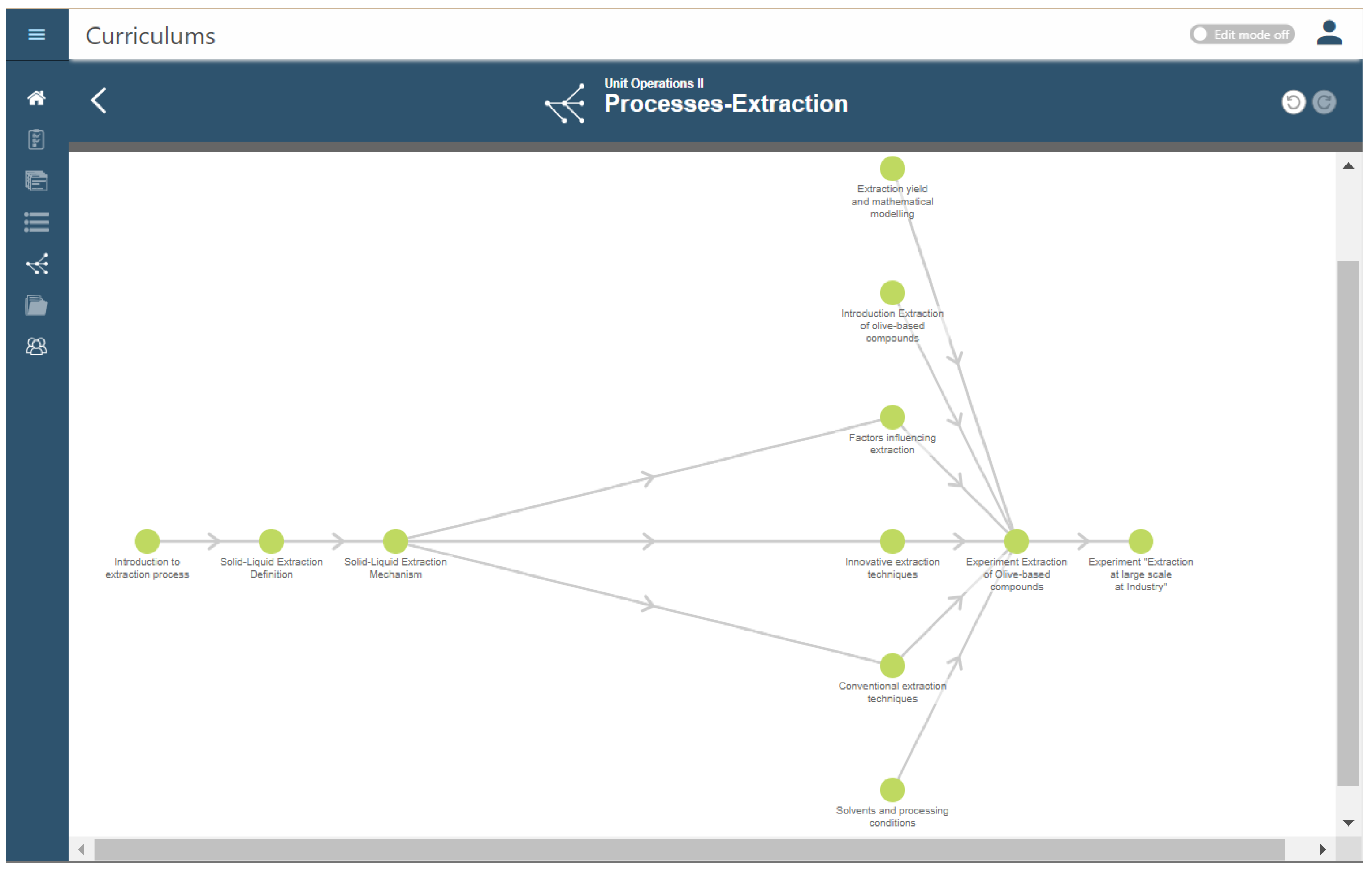

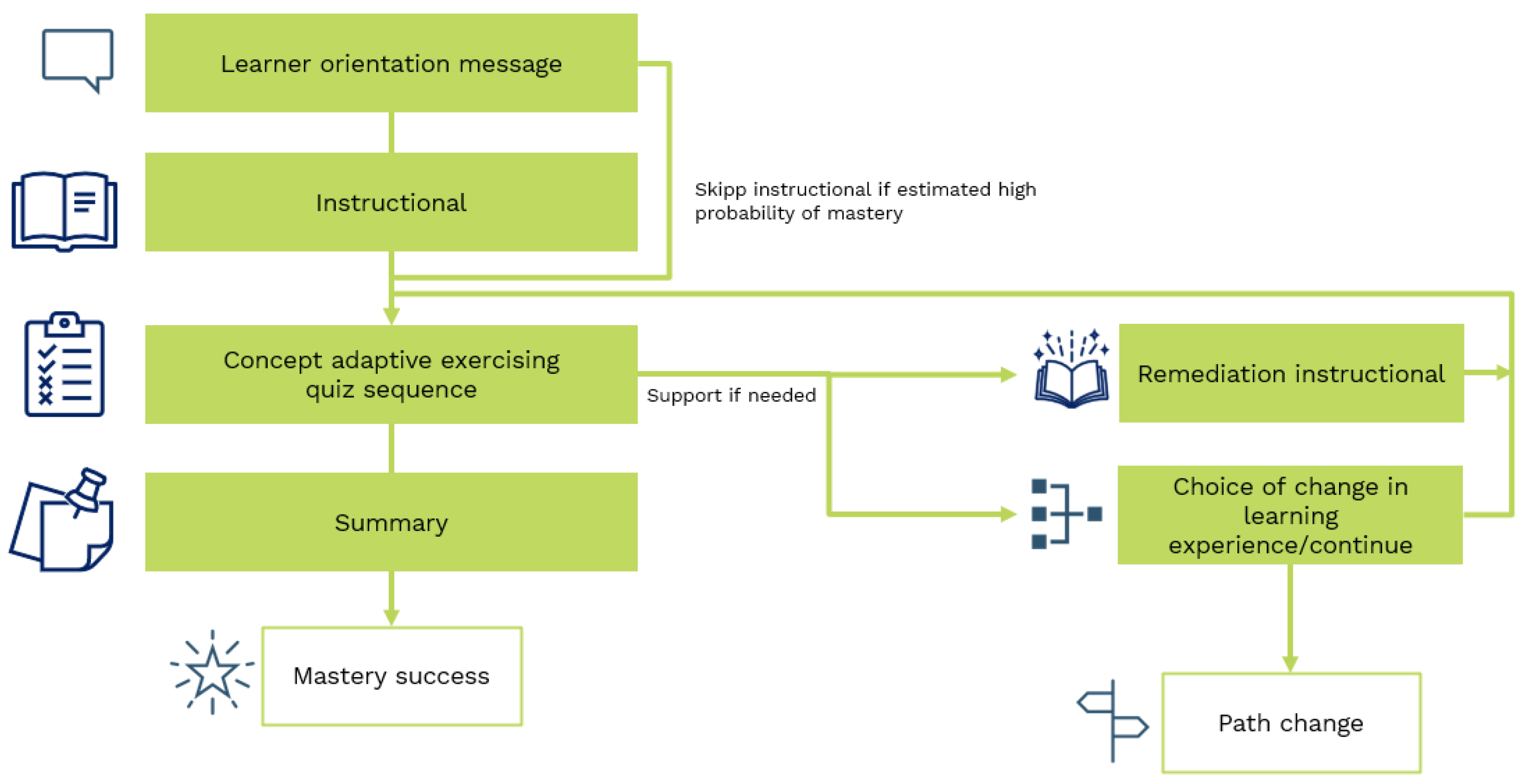
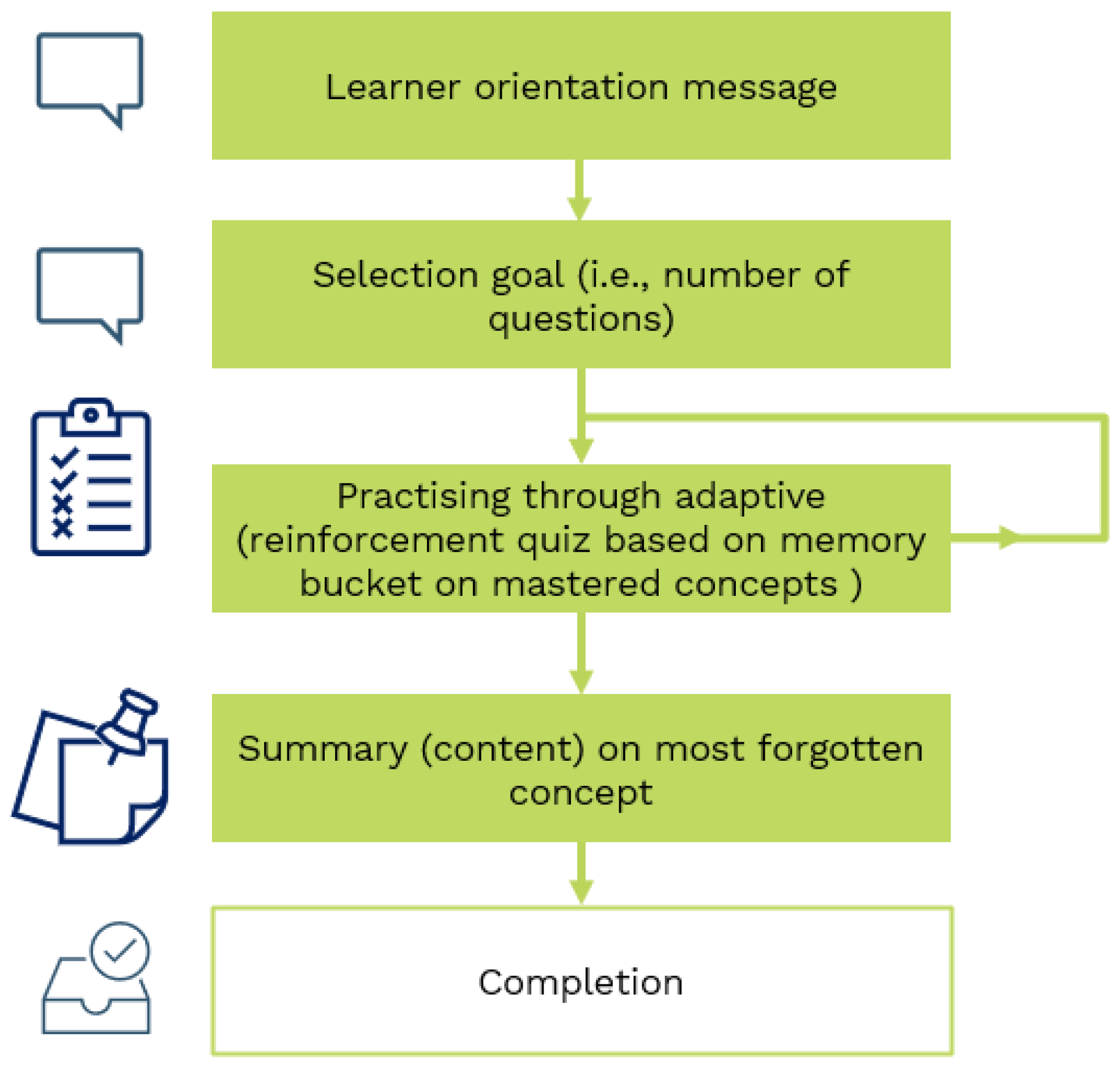

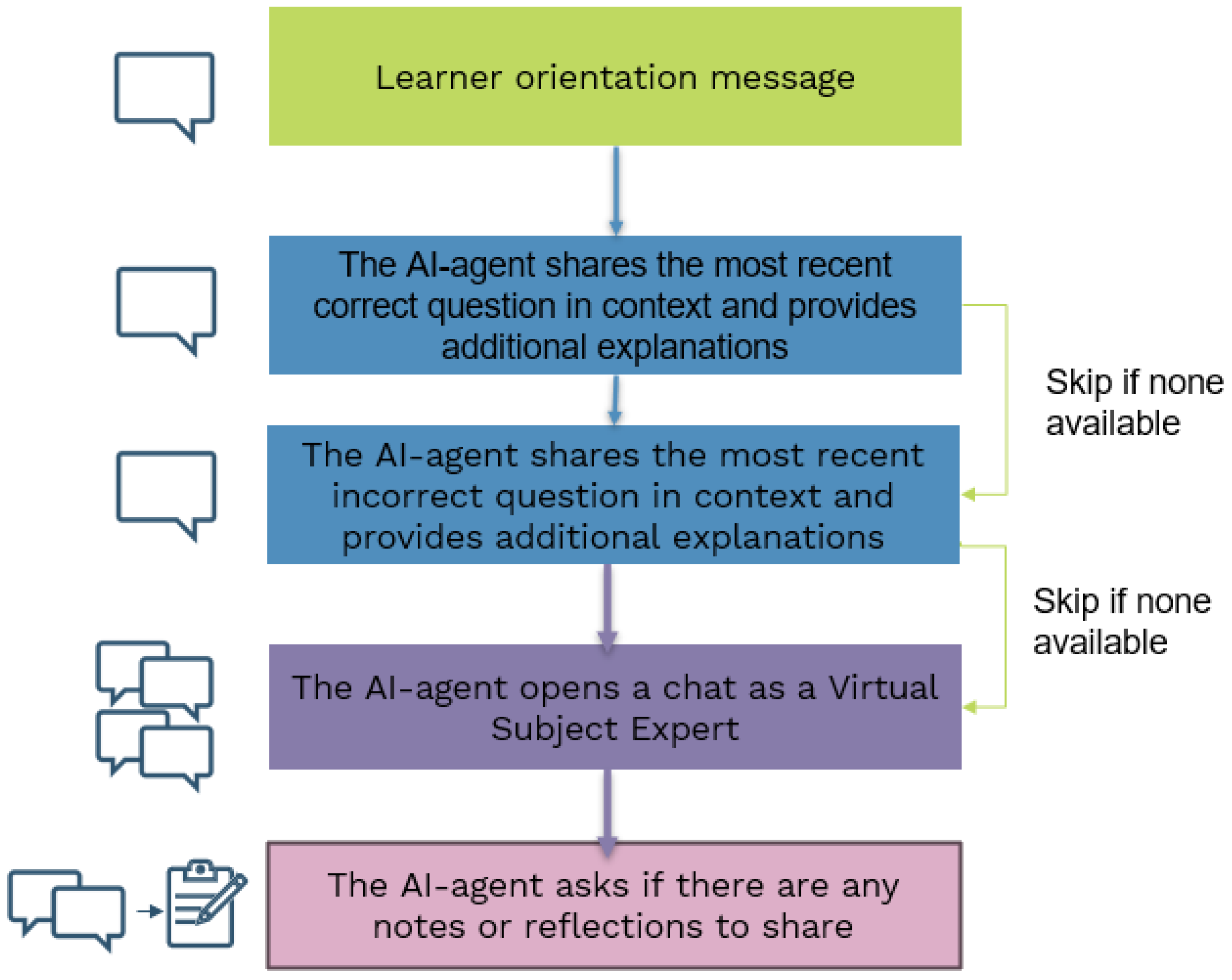
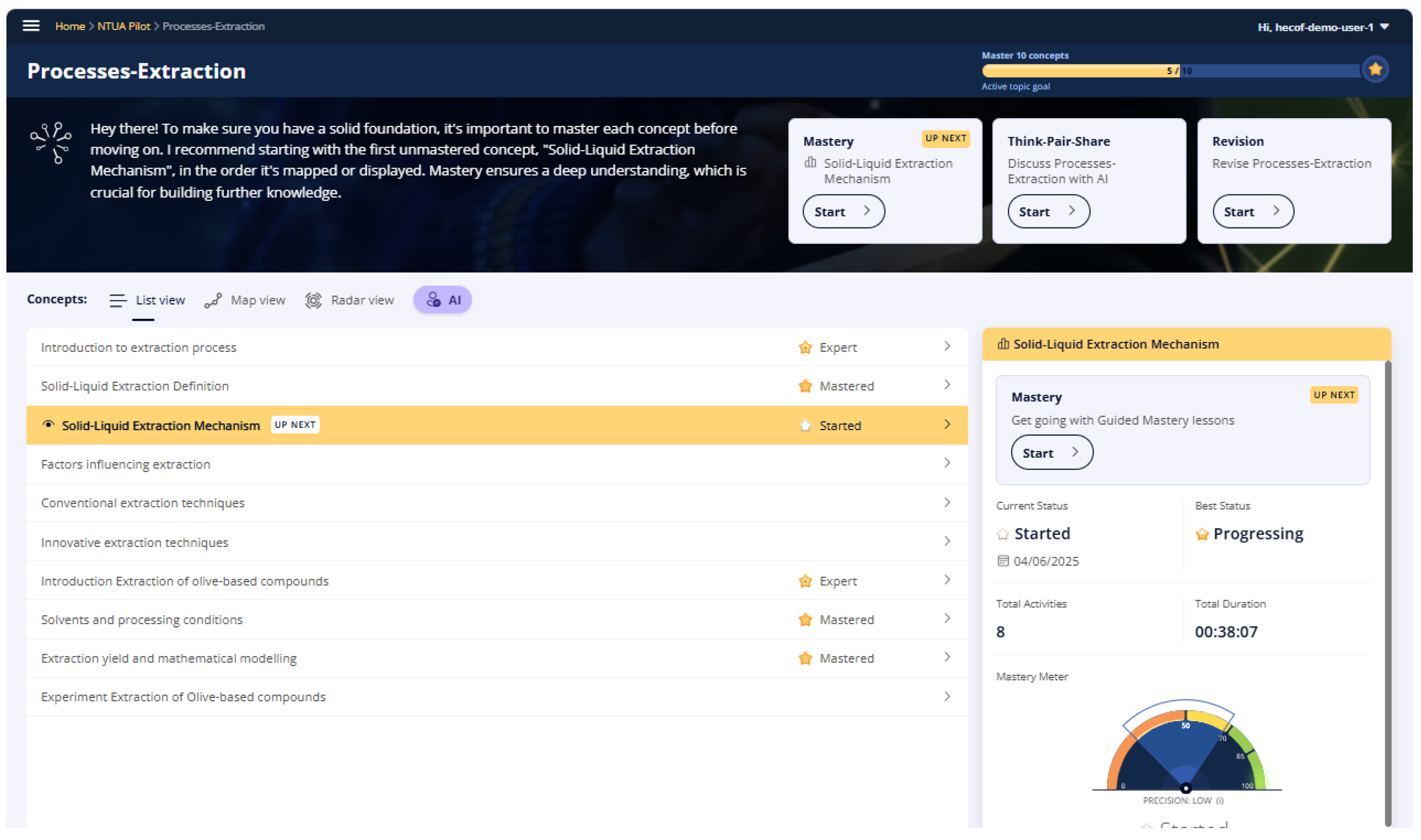
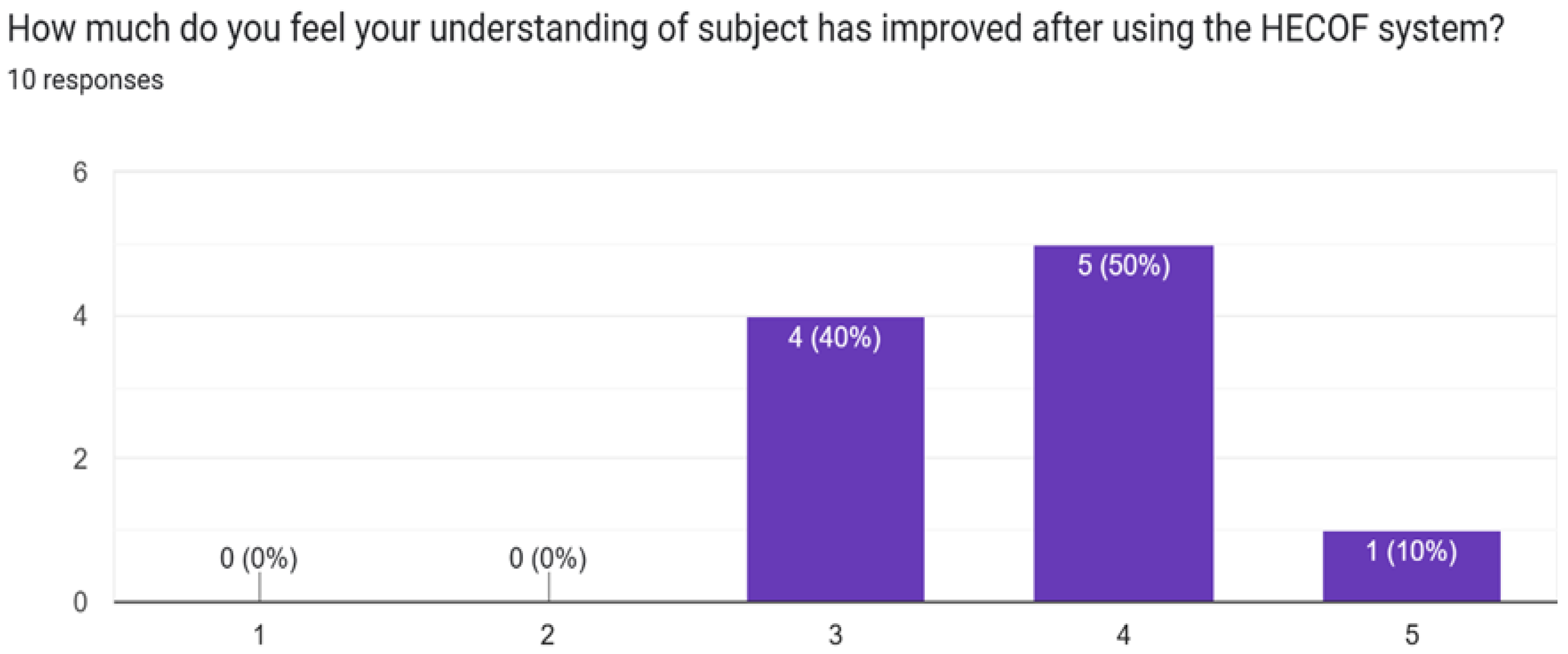
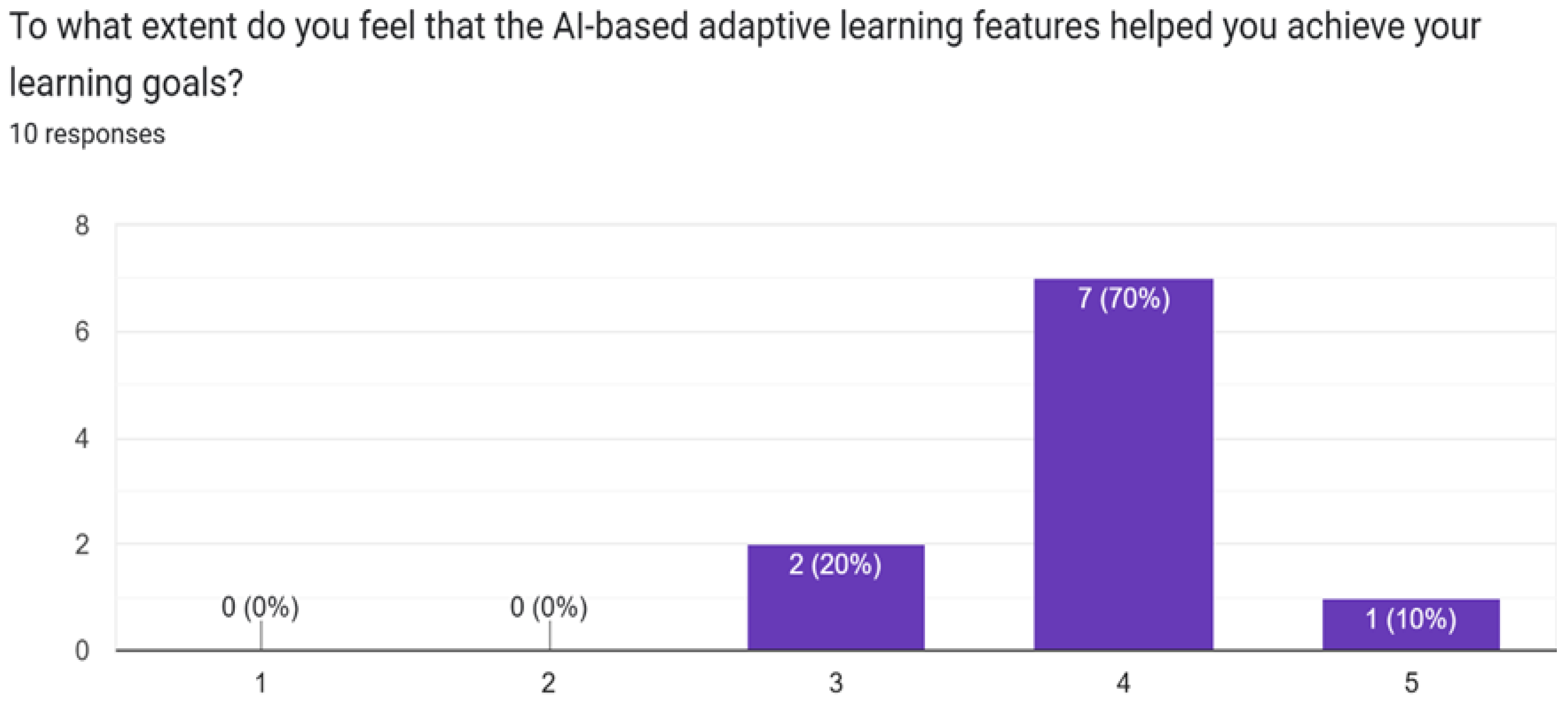

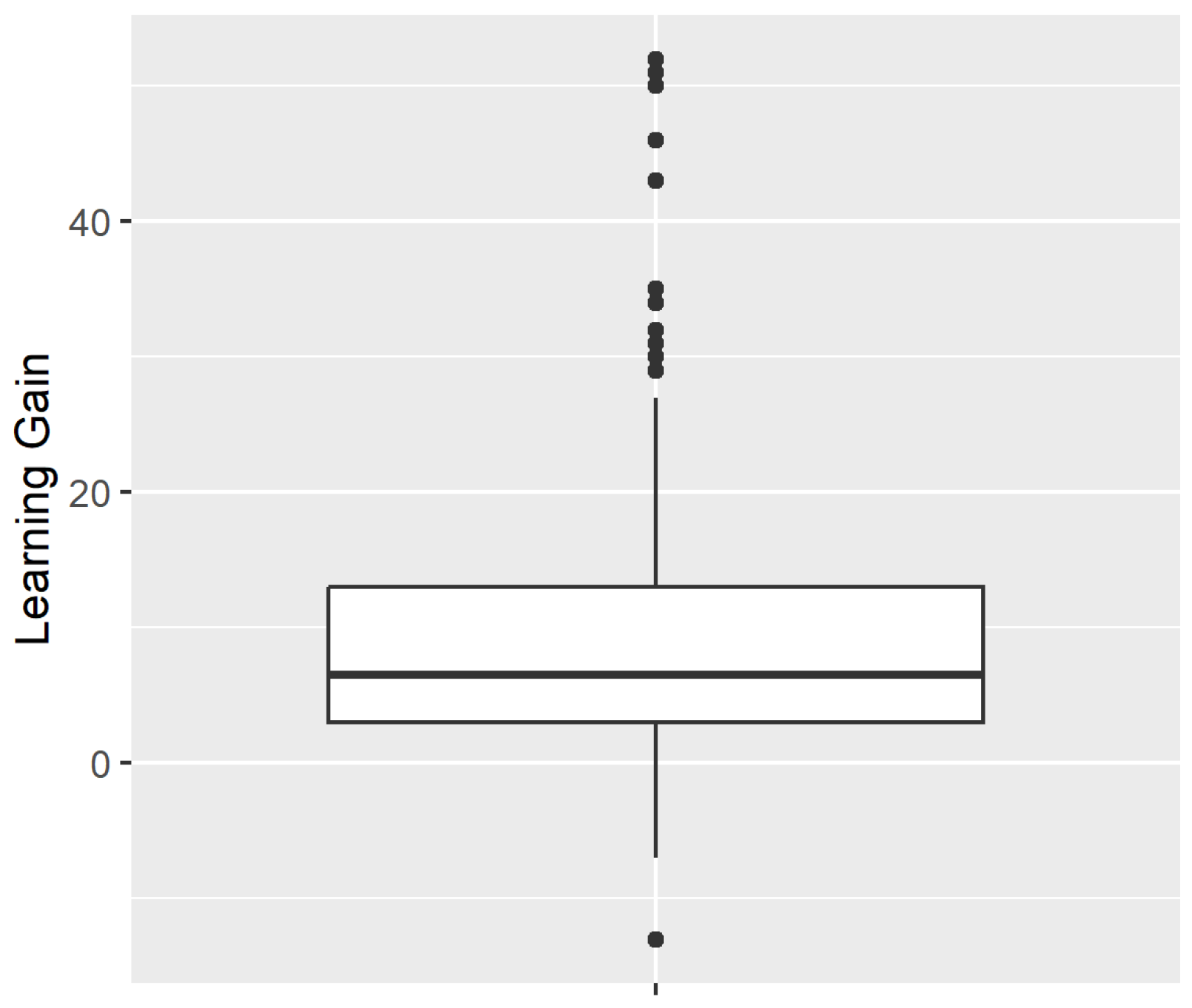
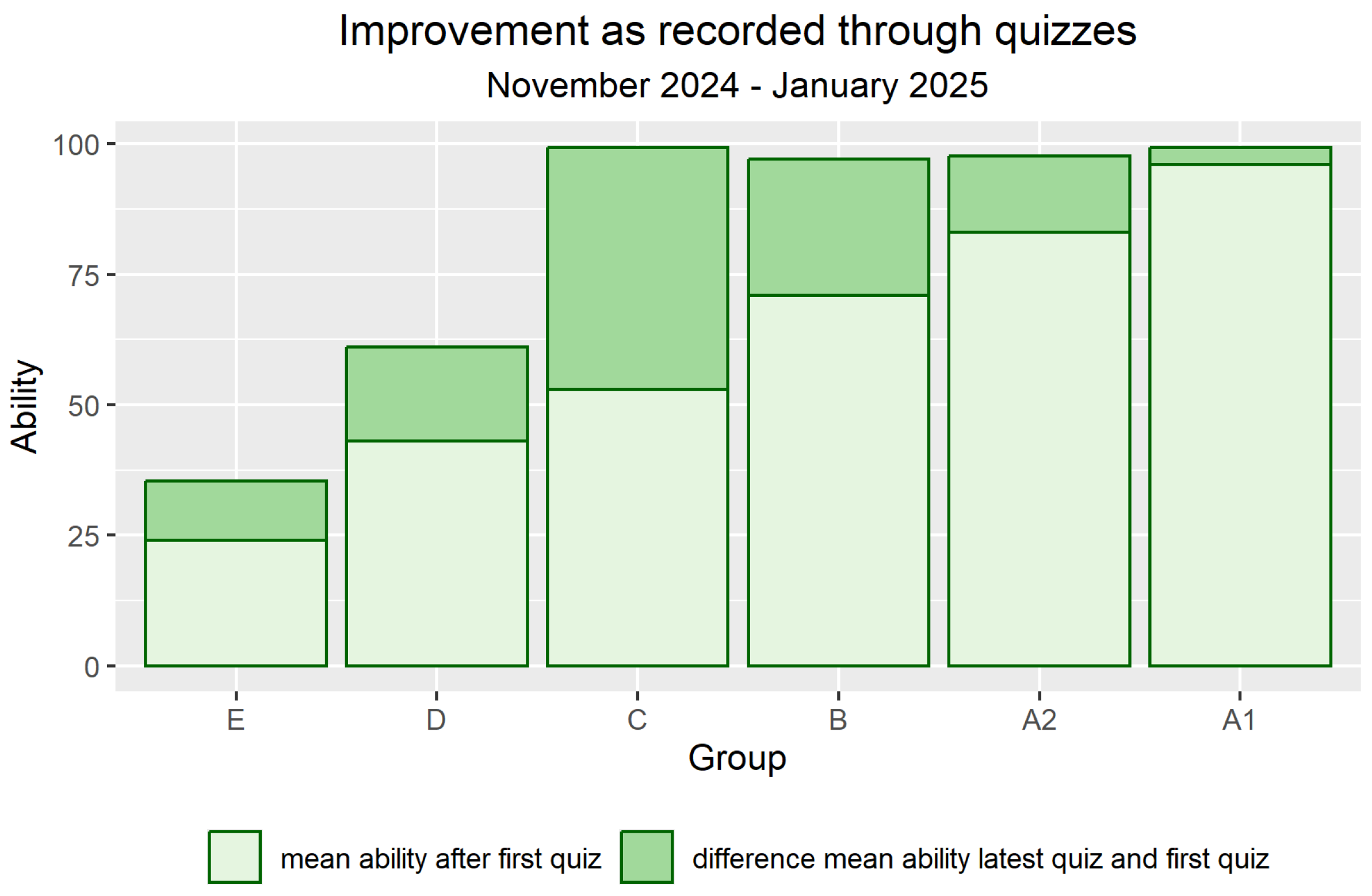
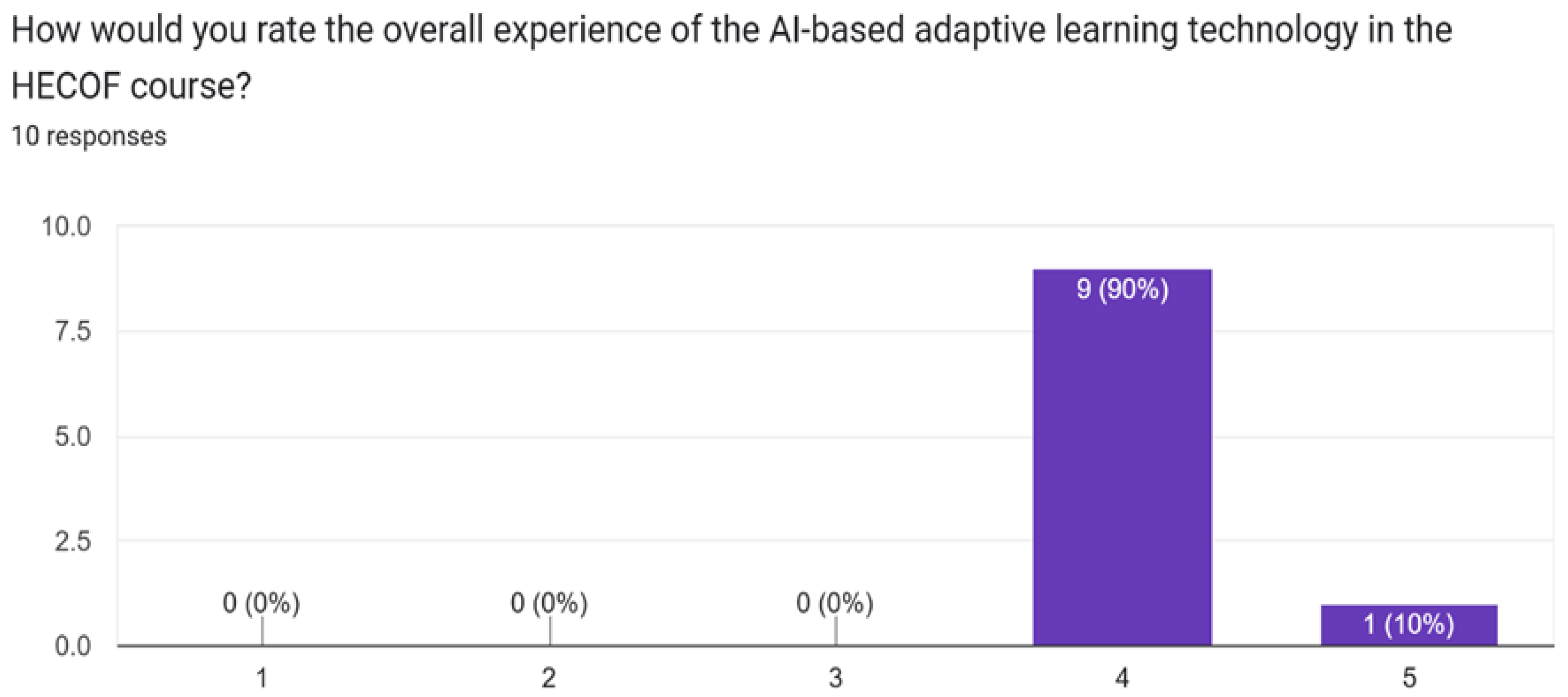

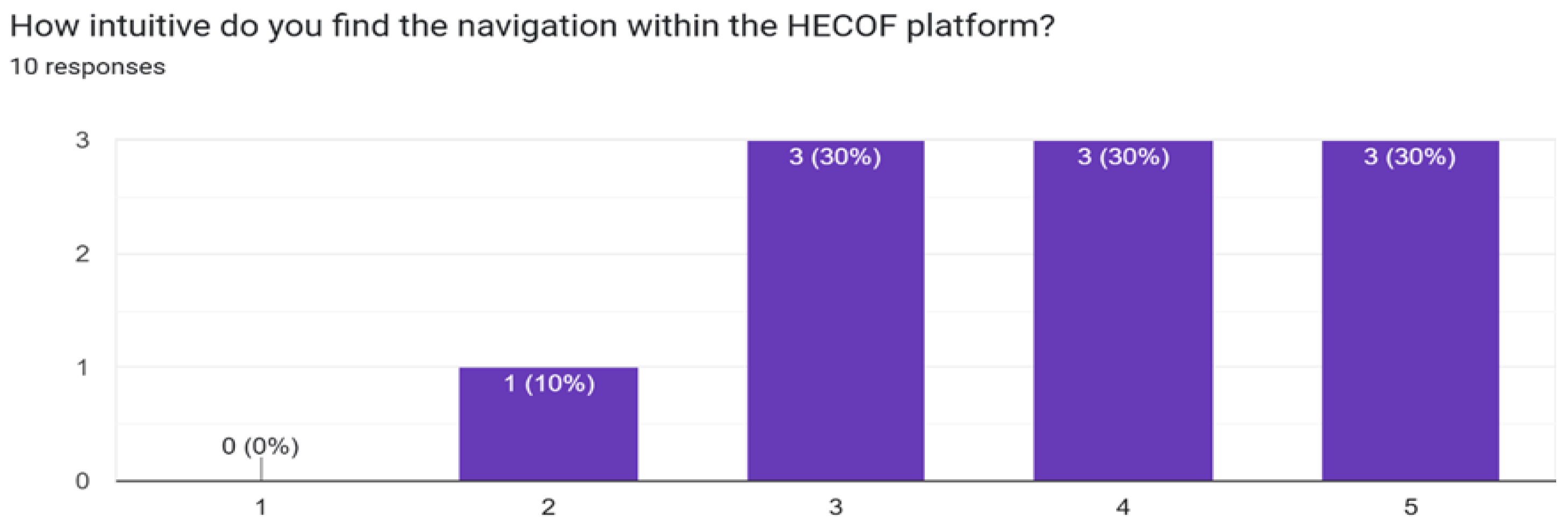

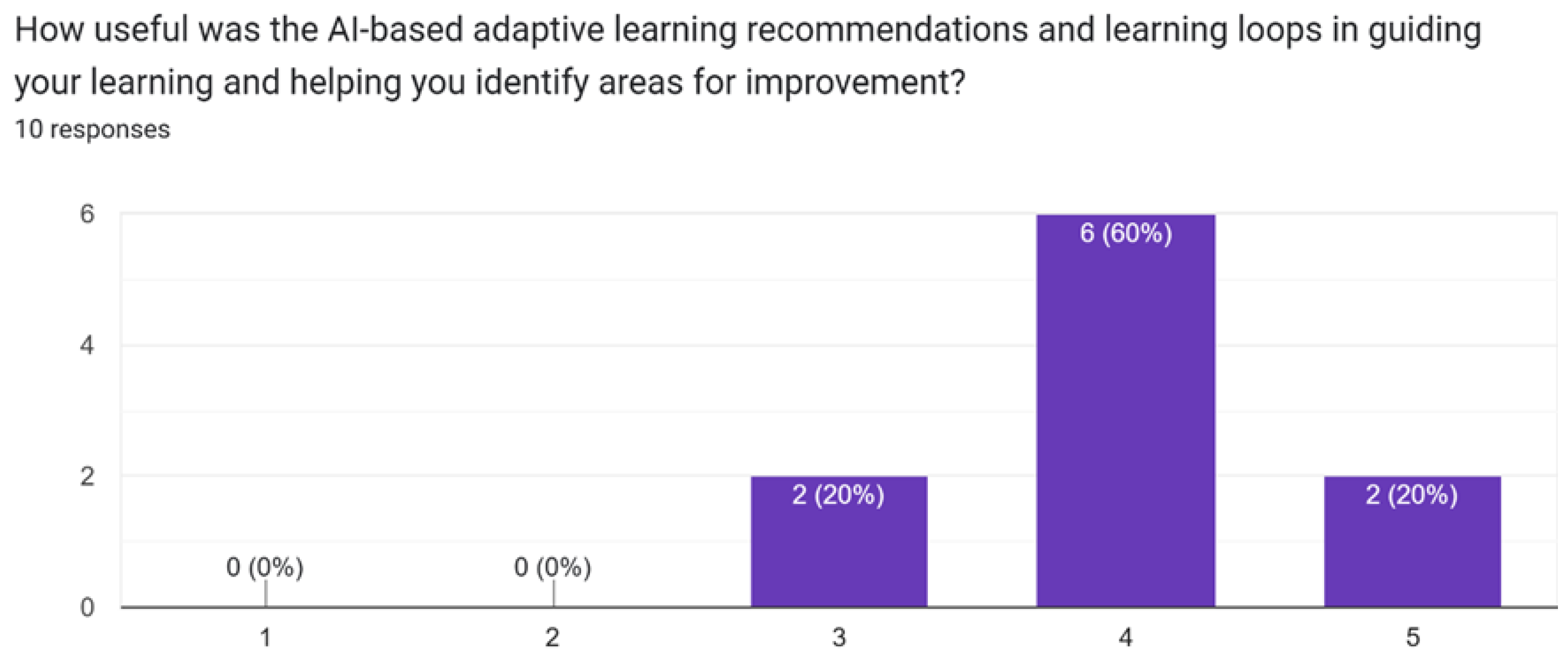
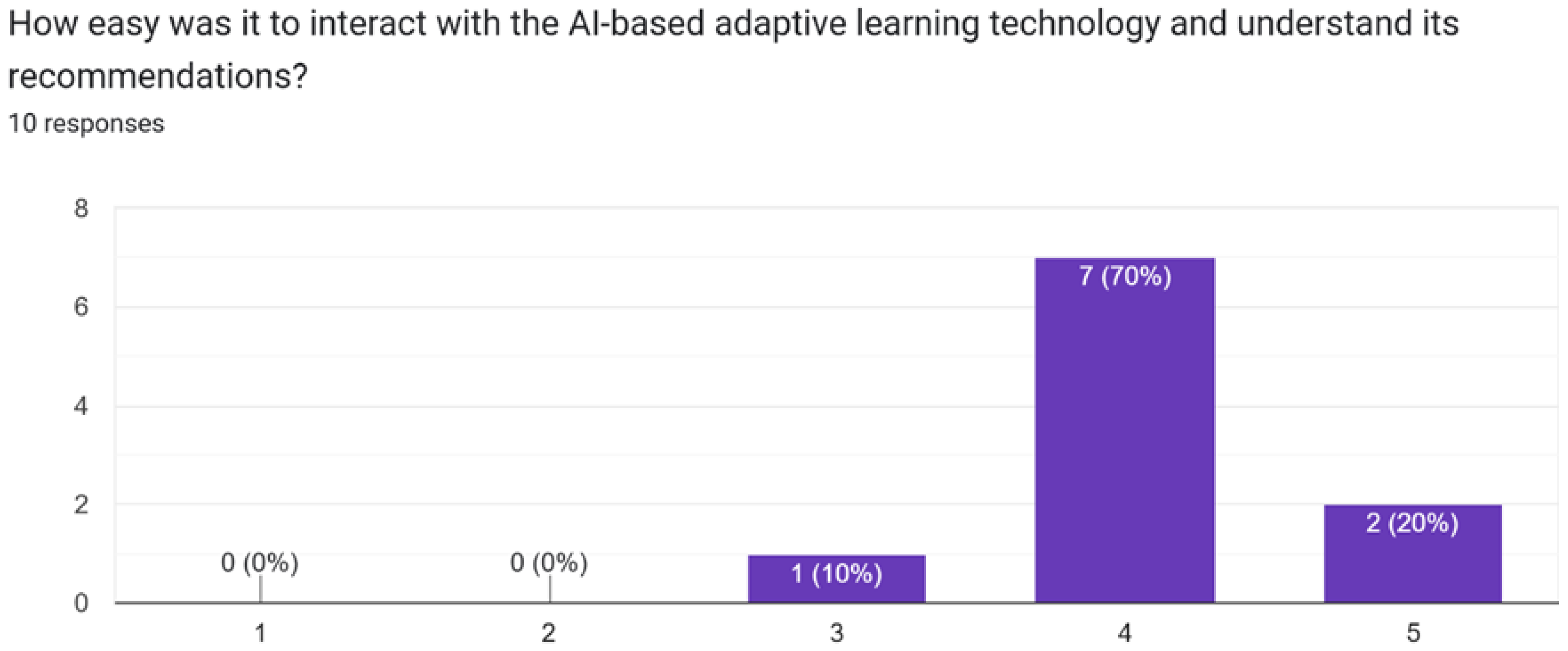
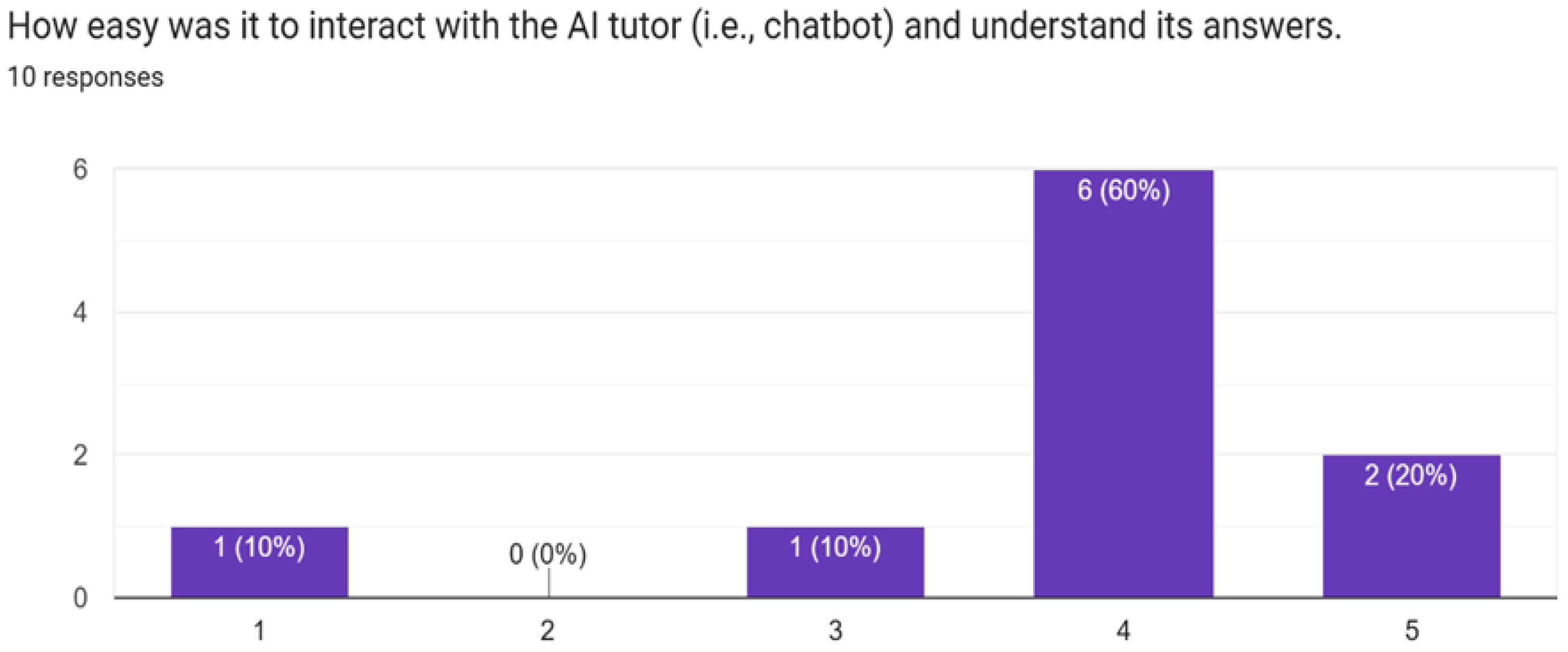
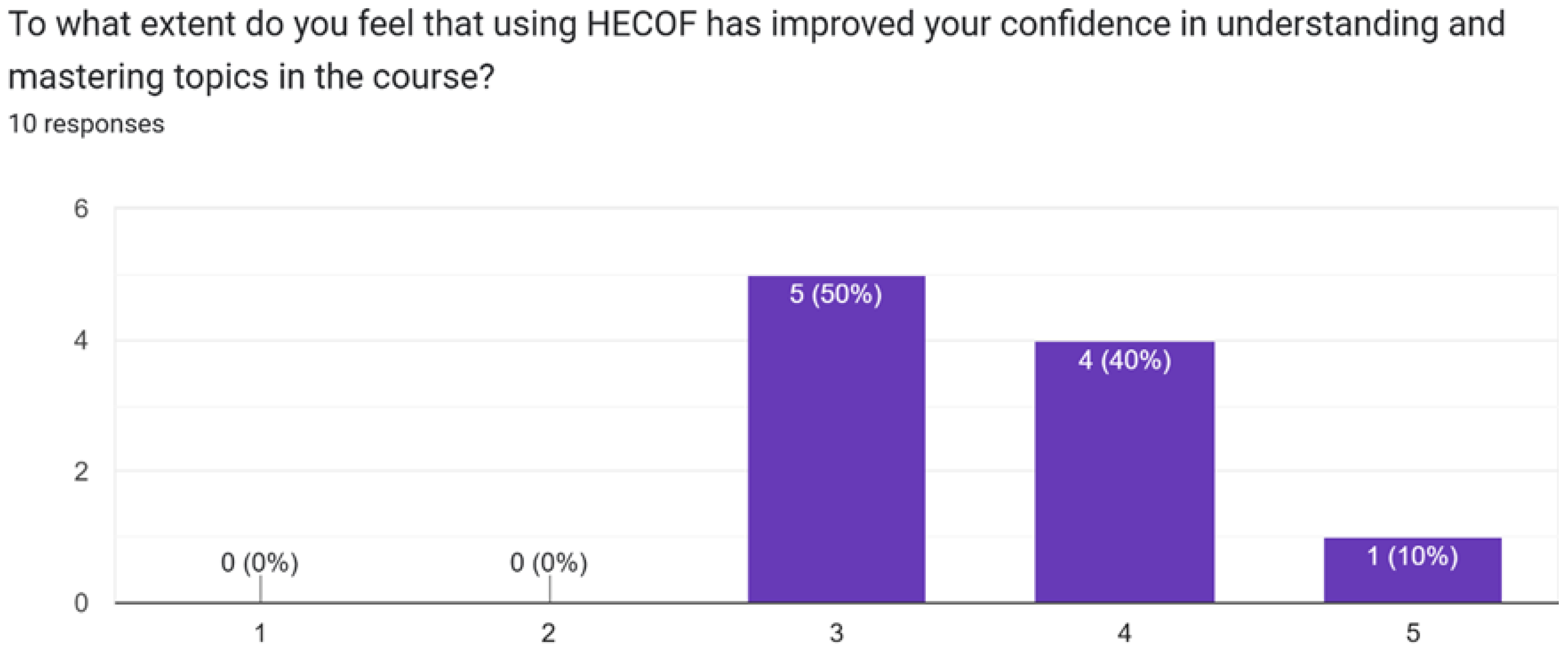
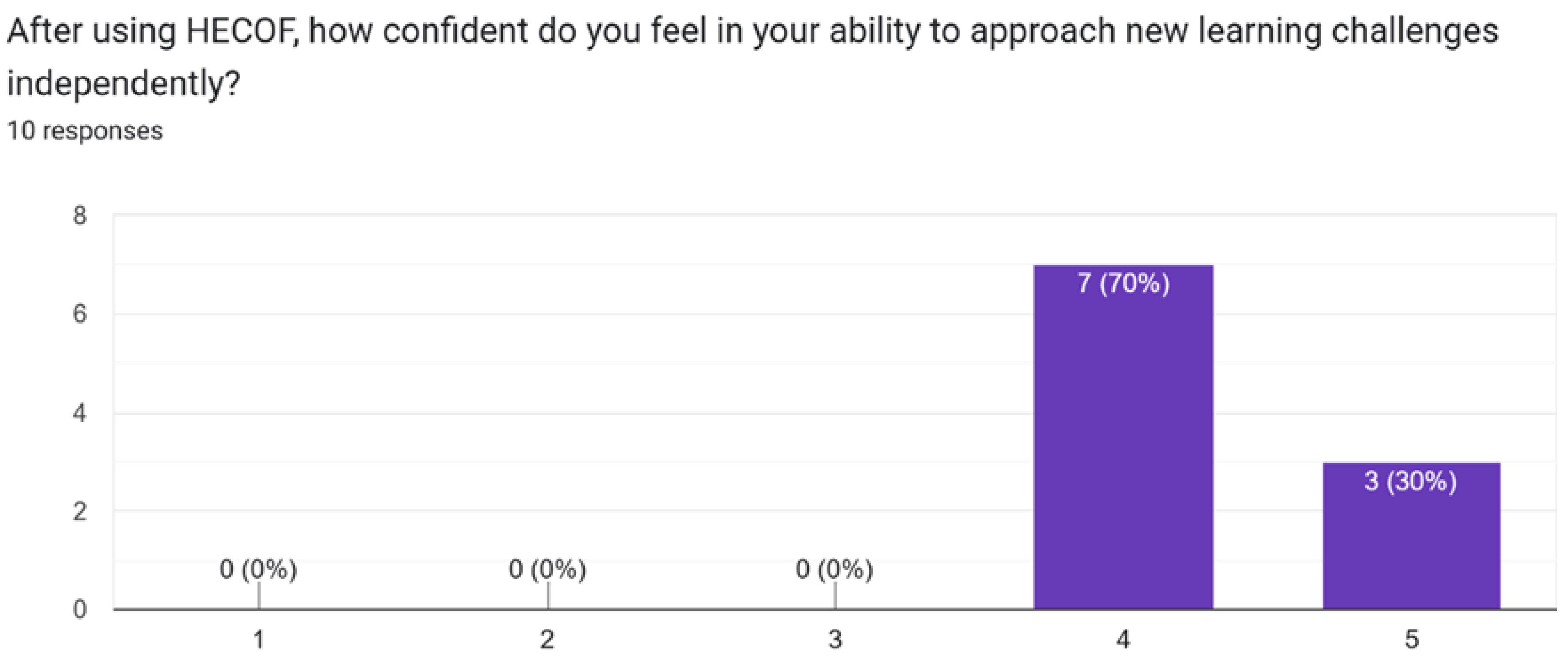
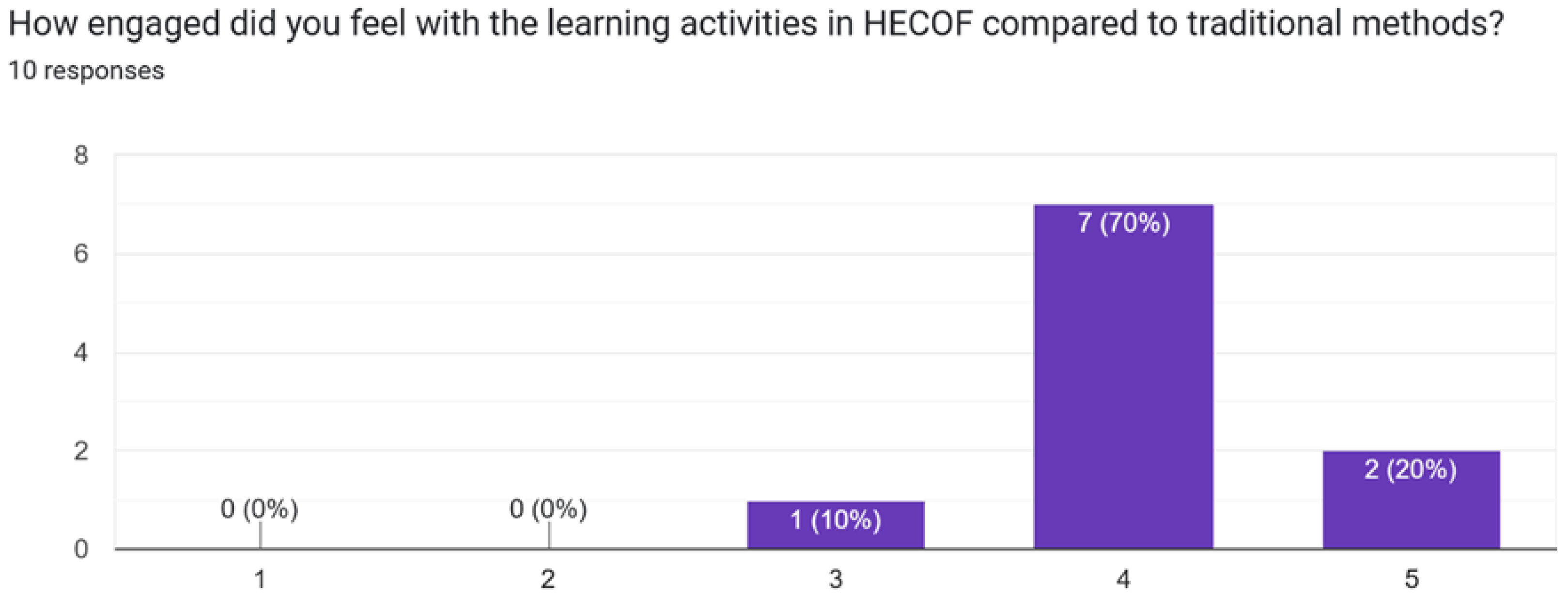

| Time | Stage | Enabling Technology | Education Chemical Engineering Examples |
|---|---|---|---|
| Early 1980s–Mid-1990s | Expert Systems | Expert systems, rule-based inference | CHEMEX for process synthesis and design, flowsheet simulators PACER, CHES, FLOWTRAN |
| ~1990 to ~2008 | Neural Networks | Feed-forward/recurrent neural networks, hybrid models | Hybridization process—complexities of process fault detection Chemical reactor selection expert system |
| ~2005 to present | Deep Learning Data Science | Deep learning, GNNs, transformers, knowledge graphs | Revealing patterns in data |
| ~2023– Future | Hybrid/Generative AI | Foundation models, generative AI (e.g., GPT, GNN+LLM), causal AI, neuro-symbolic systems | Unit operations course, industrial drier fictional company |
| Loop | Strategy | Goals | Rationale | Benefits for Students | Adaptivity | Context and Format |
|---|---|---|---|---|---|---|
| Guided mastery | Concept-level mastery learning | Build towards the mastery of the topic Create self-awareness of progress | Implement balanced adaptive learning for mastery Provide remedial content upon low success Ensure lesson mastery before progression | Personalized learning paths enhance engagement Improved academic performance and confidence | Progress through increasingly difficult levels Responsive adjustments to learner performance Offer remedial instruction when needed | Schedule-aligned concept-level mastery learning, exercise questions, guidance messaging, and adaptive-instruction |
| Reinforcement | Interleaved reinforcement | Reinforce and consolidate prior learning | Implement spaced repetition for retention | Enhances long-term information retention Strengthens recall through systematic review | Adjusts review intervals based on performance Targets areas needing reinforcement | Topic (chapter)-level spaced repetition of recently acquired concepts, where content includes assessment items, summary instructions, and guidance messages |
| Practice VR | VR Practice | Facilitate hands-on experiment practice Enhance understanding of practical concepts | Provide practical experience through VR Improve comprehension of experimental procedures Increase accessibility to laboratory experiments | Engaging, immersive learning experiences Safe environment to practice experiments., Access to virtual labs irrespective of location | Progress from guided to independent experimentation Adjust VR scenarios based on student performance | Available at concepts tagged as experiments Interaction through VR-based content objects |
| Think-pair-share | Collaborative Virtual Subject Expert based on LLM and learner model | Provide explanations and study support through an AI learning companion | Facilitate student reflection on course material Encourage sharing of notes and insights Enhance understanding through collaborative learning | Personalized explanations tailored to individual needs Opportunities for active engagement with course content Improved comprehension through articulation of thoughts | The AI agent reviews recent student responses to identify areas requiring further explanation Engages students in dialogue as a Virtual Subject Expert to address specific questions Encourages students to document reflections, promoting deeper understanding | Conversations with Virtual Subject Expert based on LLM structured in a loop at a topic (chapter) level |
Disclaimer/Publisher’s Note: The statements, opinions and data contained in all publications are solely those of the individual author(s) and contributor(s) and not of MDPI and/or the editor(s). MDPI and/or the editor(s) disclaim responsibility for any injury to people or property resulting from any ideas, methods, instructions or products referred to in the content. |
© 2025 by the authors. Licensee MDPI, Basel, Switzerland. This article is an open access article distributed under the terms and conditions of the Creative Commons Attribution (CC BY) license (https://creativecommons.org/licenses/by/4.0/).
Share and Cite
Karoglou, M.; Ghergulescu, I.; Stramarkou, M.; Boukouvalas, C.; Krokida, M. Building an Adaptive AI-Powered Higher Education Class for the Future of Engineering: A Case Study from NTUA. Appl. Sci. 2025, 15, 8524. https://doi.org/10.3390/app15158524
Karoglou M, Ghergulescu I, Stramarkou M, Boukouvalas C, Krokida M. Building an Adaptive AI-Powered Higher Education Class for the Future of Engineering: A Case Study from NTUA. Applied Sciences. 2025; 15(15):8524. https://doi.org/10.3390/app15158524
Chicago/Turabian StyleKaroglou, Maria, Ioana Ghergulescu, Marina Stramarkou, Christos Boukouvalas, and Magdalyni Krokida. 2025. "Building an Adaptive AI-Powered Higher Education Class for the Future of Engineering: A Case Study from NTUA" Applied Sciences 15, no. 15: 8524. https://doi.org/10.3390/app15158524
APA StyleKaroglou, M., Ghergulescu, I., Stramarkou, M., Boukouvalas, C., & Krokida, M. (2025). Building an Adaptive AI-Powered Higher Education Class for the Future of Engineering: A Case Study from NTUA. Applied Sciences, 15(15), 8524. https://doi.org/10.3390/app15158524









